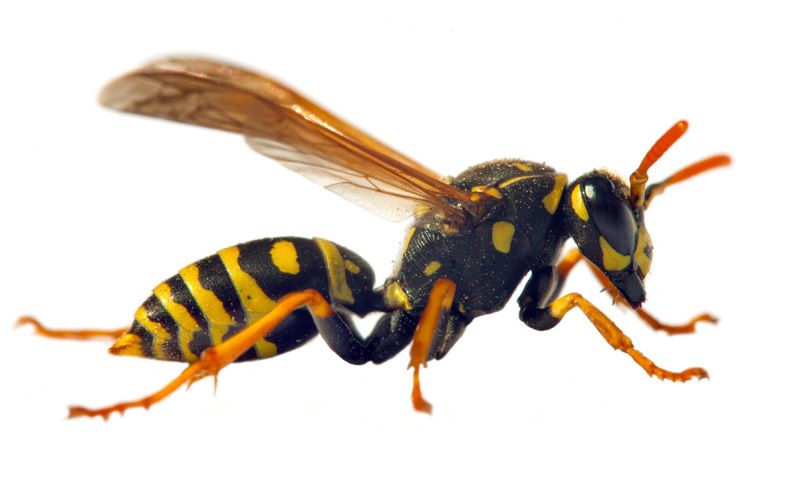
German Wasp – Vespula germanica
German Wasp – Vespula germanica
Description of Insect:
The German wasp (Vespula germanica) is also known as the European wasp or German yellowjacket It is a highly aggressive and adaptable insect belonging to the Vespidae family. Native to Europe, Northern Africa, and temperate Asia, this wasp has become an invasive species in many regions, including North America, Australia, and New Zealand. It thrives in both urban and rural environments, building nests in wall cavities, attics, and underground burrows.
German wasps are medium-sized, measuring 12-15 mm in length, with queens reaching up to 20 mm. They have distinctive black and yellow banded bodies, with black dots and markings on their face that help distinguish them from other wasp species. They feature yellow legs, transparent wings, and a pair of black antennae. Unlike bees, German wasps have smooth stingers, allowing them to sting multiple times without harm to themselves.
Highly social insects, German wasps form large colonies that can contain thousands of individuals. Their nests are made of chewed plant fibers mixed with saliva, forming a papery structure. In temperate regions, colonies usually last for a single season, but in warmer climates, they may persist for several seasons. This leads to the formation of large, dangerous nests of more than 100,000 individuals.
Life cycle of German Wasp
The life cycle of the German wasp begins in the spring when an overwintered queen emerges from hibernation and constructs an embryo nest with hexagonal cells. The queen lays her first batch of eggs, which transform into worker wasps within 4 to 6 weeks.
These workers take over the responsibility of foraging, nest expansion, and larval care, allowing the queen to focus solely on egg-laying. As summer progresses, the colony grows rapidly, sometimes exceeding 10,000 individuals. New cells are also added to the nests and by late summer, the nest is about the size of a football.
In late summer or early fall, the colony produces new queens and males. These reproductive wasps leave the nest to mate, after which the males die, and the newly fertilized queens seek shelter to overwinter. As temperatures drop, the original colony, including the queen, workers and males disintegrates. However, in milder climates, some nests may survive and continue growing into the next year, leading to even larger colonies.
Damage they cause:
German wasps are considered both a nuisance and a serious threat due to their aggressive behavior.
- Threat to Humans and Animals: German wasps are highly defensive and will sting repeatedly if they feel threatened. Their stings are painful and can cause severe allergic reactions, including anaphylaxis in sensitive individuals. This also affects the tourism industry, as aggressive foraging wasps disrupt outdoor activities such as, boating, swimming, and fishing at resorts.
- Economic Damage: German wasps pose a significant threat to agriculture, particularly in fruit-growing regions. They feed on ripe fruits such as grapes, apples, and pears, causing direct damage to crops and reducing marketable yields. Vineyards in Australia have reported significant losses due to foraging wasps that spoil crops and intimidate pickers.
- Disruption of Ecosystems: As invasive predators, German wasps disrupt native ecosystems by preying on other insects, including beneficial pollinators and natural pest controllers. Their presence can alter food webs, reducing biodiversity in the areas they invade. In addition, they prey on flies, honey bees, spiders, and birds; causing disappearance of insect life and insectivorous birds.
- Structural and Environmental Damage: German wasps often build nests in man-made structures such as walls, roofs, and attics. Large nests can cause structural damage, and the moisture from the nest may cause mold growth. In some cases, wasp nests built from chewing wood fibres may also weaken the integrity of the wood, leading to degradation of the wood surfaces.
